The Museum of Modern Art (MoMA) is an art museum located in Midtown Manhattan, New York City. The idea of a museum dedicated to modern art was developed in 1929 primarily by Abby Aldrich Rockefeller (wife of John D. Rockefeller, Jr.) and her two friends Lillie P. Bliss and Mary Quinn Sullivan. It opened to the public on November 7, 1929; and, at the time, it was America’s premier museum devoted exclusively to modern art. Building its reputation over the years, MoMA is now considered one of the largest and most influential museums of modern art in the world. It is also one of the most visited museums in the world with 2.8 million people visiting it in 2016. Apart from holding some of the best known artworks of the genre, MoMA has also played a key role in the development of modern art. Among the best known works in the museum are Van Gogh’s The Starry Night; Picasso’s Les Demoiselles d’Avignon; and Warhol’s Campbell’s Soup Cans. Here are the 10 most famous painting at the Museum of Modern Art.
#10 The Dream
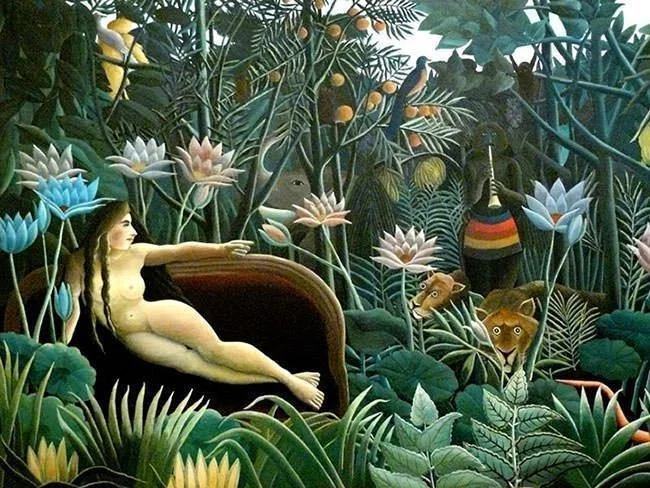
| Artist: | Henri Rousseau |
| Year: | 1910 |
The Dream was exhibited a few months before the death of Henry Rousseau, a self-taught genius who was ridiculed during his lifetime. It is the last completed work of Rousseau and the largest of his jungle paintings. The reclining nude in the painting is a portrait of Yadwigha, Polish mistress of Rousseau from his youth. Her pose follows the classical tradition since Titian’s 1538 painting Venus of Urbino. There are various interpretation of the painting. According to Rousseau the painting depicts a woman reclining on a couch in Paris, dreaming she is listening to a flute player in the jungle. The Dream was later much celebrated by the Surrealists, whose art valued surprising juxtapositions and dream-like moods. It was donated to MoMA by Nelson A. Rockefeller on the 25th anniversary of the museum.
#9 Drowning Girl
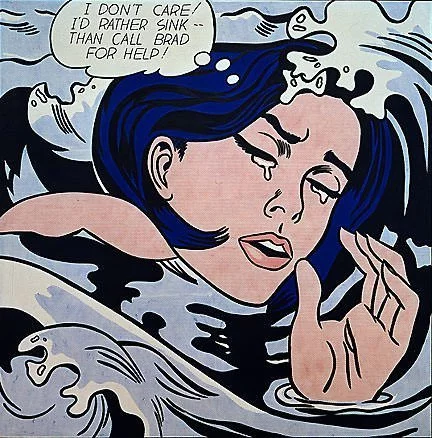
| Artist: | Roy Lichtenstein |
| Year: | 1963 |
Roy Lichtenstein initially worked in Cubism and Abstract Expressionism before moving to Pop Art, the genre in which he made his mark. Considered a cornerstone of Lichtenstein’s work, Drowning Girl is sometimes also referred to as ‘I Don’t Care! I’d Rather Sink’. The printing method and the use of speech balloon to convey thoughts give the painting an appearance of a comic book page. The heroine appears a victim of an unhappy love affair who would rather drown than ask for help from her lover. The Drowning Girl has been described as a “masterpiece of melodrama” and it is the most famous painting of Lichtenstein after Whaam!. It is part of the permanent collection of MoMA since 1971.
#8 Girl before a Mirror
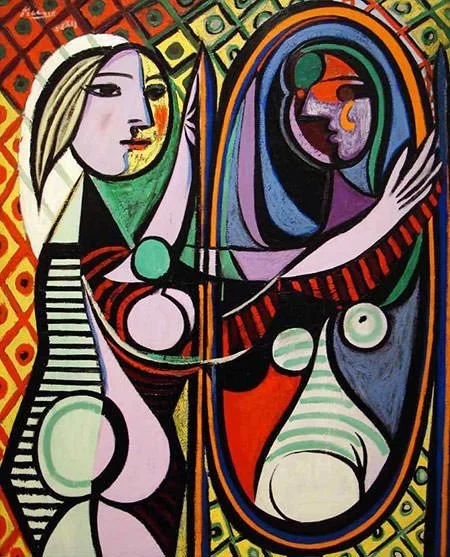
| Artist: | Pablo Picasso |
| Year: | 1932 |
Pablo Picasso is regarded by many as the greatest artist of all time. This painting portrays Marie-Thérèse Walter, mistress and model of Pablo Picasso from 1927 to around 1935. The young Marie-Thérèse was one of the favorite subjects of Picasso in the early 1930s. Girl before a Mirror portrays her as beautiful and dressed up with make up on the left side; while on the right side her face is darkened, her eyes are round and hollow, and her intensely feminine body is twisted and contorted. The painting is renowned for its varied interpretations. Some critics consider it to be a representation of Walter’s day-self and her night-self. Others view it as Walter confronting her mortality by looking at the mirror which suggests to her, her ultimate fate. It may also imply her transition from an innocent girl to a worldly woman aware of her own sexuality.
#7 The Lovers
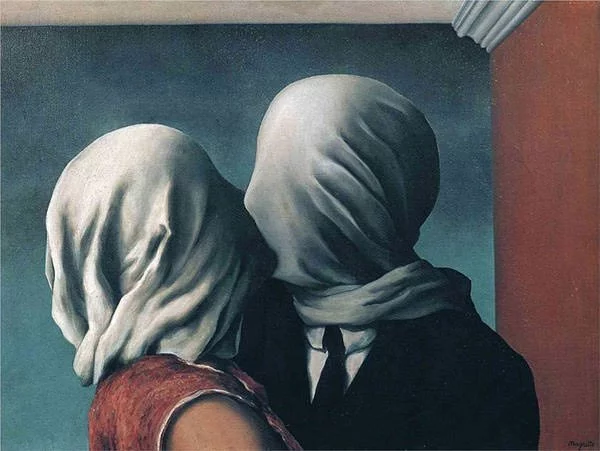
| Artist: | Rene Magritte |
| Year: | 1928 |
Rene Magritte was a Belgian artist most renowned for being one of the leaders of the influential 20th century art movement, Surrealism. This painting shows a male figure in black suit locked in embrace with a woman clad in red. The figures are kissing each other but, interestingly, through veils; and this is what makes the painting thought provoking. Like many of Magritte’s paintings, there are several interpretation of the painting including it being a depiction of our inability to fully unveil the true nature of even our most intimate companions. Faces hidden from view is a common feature in many Magritte paintings. When he was 14, Magritte’s mother committed suicide by drowning. He witnessed the body of his mother with her wet nightgown wrapped around her face and some have speculated that this trauma led him to show obscured faces in his works. However, Magritte denied this. The Lovers is one of the most popular and most analyzed works of Rene Magritte.
#6 Broadway Boogie Woogie

| Artist: | Piet Mondrian |
| Year: | 1943 |
Geometric abstraction is a form of abstract art based on the use of geometric forms. Piet Mondrian coined the term neoplasticism for his abstract geometric paintings in which he only used the straight line, the three primary colors, and the neutrals of black, white and gray. Mondrian’s last complete painting, Broadway Boogie Woogie is inspired by the city grid of Manhattan and the Broadway boogie woogie music, which Mondrian loved. The painting is considered the pinnacle of Mondrian’s representation using his pictorial vocabulary of lines, squares and primary colors. It marks the culmination of his stylistic innovation and is one of the most influential artworks in the school of abstract geometric painting.
#5 Campbell’s Soup Cans
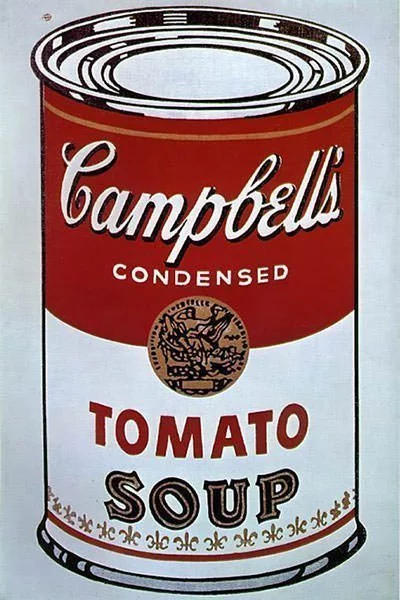
| Artist: | Andy Warhol |
| Year: | 1962 |
One of the most famous works of Pop Art, Campbell’s Soup Cans consist of thirty-two canvases, one of each of the 32 varieties offered by the company at the time. It is the work of art that led to Pop Art becoming a major art movement in the U.S. The non-painterly style and the commercial subject of the painting initially caused offense as it affronted the technique and philosophy of Abstract Expressionism, the then dominant style in America. The resulting debates on the merits and ethics of such a painting which lacked the aesthetics and mystical inclination of Abstract Expressionist works created an uproar in the American art world. It made Andy Warhol the leading and the most well-known artist of the Pop Art movement, which went to have a huge influence on the western art world.
#4 Christina’s World
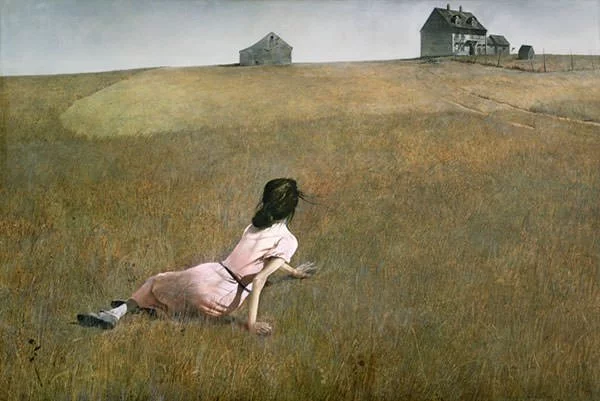
| Artist: | Andrew Wyeth |
| Year: | 1948 |
Andrew Wyeth was one of the best-known U.S. artists of the middle 20th century. His precise realistic views of rural life became icons of American culture and challenged the nature of modern art in the nation, which was primarily abstract. His masterpiece, Christina’s World, is among the most famous American paintings of the middle 20th century. It depicts a woman lying on the field looking at a gray house on the horizon. The woman in the painting is Anna Christina Olson. She was Wyeth’s neighbor in South Cushing, Maine and she suffered from a degenerative muscular disorder that prevented her from walking. Wyeth was inspired to create the masterpiece when he saw her crawling across a field from his window. Though it received little attention on first being displayed, Christina’s World grew in popularity over the years. It is now regarded as an icon of American art and one of the most important works of American realism.
#3 Les Demoiselles d’Avignon
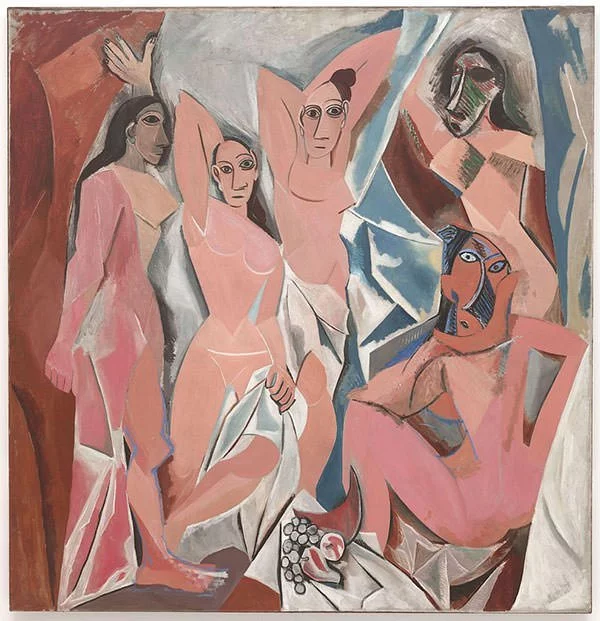
| English Title: | The Young Ladies of Avignon |
| Artist: | Pablo Picasso |
| Year: | 1907 |
Originally titled Le Bordel d’Avignon (The Brothel of Avignon), this revolutionary masterpiece is considered one of the most influential paintings of 20th century as it played a key role in the development of both Cubism and Modern art. It was a radical departure from traditional European painting. Picasso used different styles to depict each figure in the painting with the head of the women pulling the curtain in upper right being the most strictly Cubist element. The painting was controversial not only for its radical style but also for its subject. It was first exhibited to the public in 1916 and its title was changed to lessen its scandalous impact. The Avignon of the work’s title is a reference to a street in Barcelona famed for its brothel. The artwork depicts five nude female prostitutes in a disconcerting confrontational manner. Les Demoiselles d’Avignon is considered by many as the most important work of Pablo Picasso. MoMA acquired the painting for $24,000 and it is one of the key attractions at the museum.
#2 The Persistence of Memory
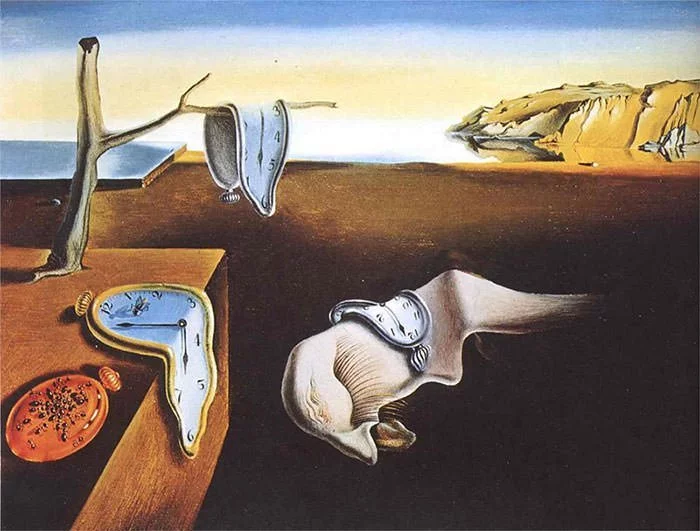
| Artist: | Salvador Dali |
| Year: | 1931 |
This iconic and much-reproduced painting depicts a scene with watches melting slowly on rocks and the branch of a tree; with the ocean as a back drop. Dali uses the concept of hard and soft in this painting. This concept may be illustrated in a number of ways like the human mind moving from the softness of sleep to the hardness of reality. In his masterpiece, Dali uses melting watches and rocks to represent the soft and hard aspects of the world respectively. The Persistence of Memory has been much analyzed over the years as Dali never explained his work. The melting watches have been thought to be an unconscious symbol of the relativity of space and time; as a symbol of mortality with the ants surrounding the watches representing decay; and as irrationality of dreams. The Persistence of Memory is considered one of the greatest masterpieces of 20th century art. It is not only the most famous painting of Salvador Dali but also the most renowned artwork of the entire Surrealism movement.
#1 The Starry Night
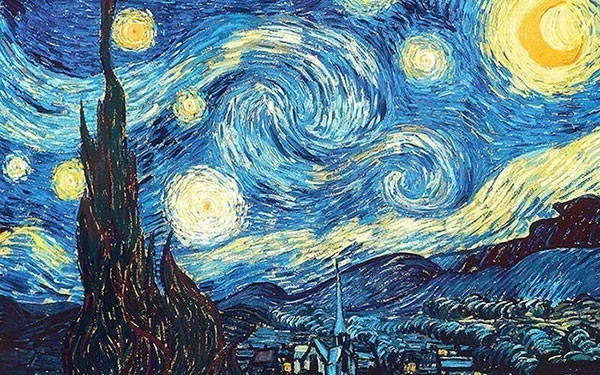
| Artist: | Vincent Van Gogh |
| Year: | 1889 |
Van Gogh, who had a struggle with mental illness, admitted himself to the Saint-Paul asylum in Saint-Rémy-de-Provence in France on 8th May 1889. Although painted during the day, this masterpiece depicts the night view outside the window of Van Gogh’s room at the asylum. The Starry Night shows the artist’s interest in astronomy and a study made by the Griffith Park Observatory demonstrated that Vincent represented the Moon, Venus, and several stars in the exact position they occupied that clear night. The painting has been much analyzed with various art historian finding different symbolic elements in it. The Starry Night is one of the most recognized paintings in the history of western art. It has been widely referenced in popular culture including in a well known song by Don McLean titled “Vincent”. It is definitely the most famous painting by Vincent Van Gogh and it is regarded as one of the greatest works in modern art. A part of its permanent collection since 1941, The Starry Night is the most famous painting at the Museum of Modern Art.

